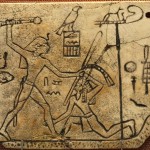
The Origin and Early Development of the Smiting Scene
The depiction of the king with mace raised above a helpless prisoner is one of the most prominent and enduring images of ancient Egypt. Although it has often been claimed that the origin for this iconic image lies in the Predynastic Era, this is unlikely. Not until the Narmer Palette do we see a possible model for dynastic developments of the image. These developments are traced here within the Early Dynastic Period [more…]
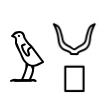
Notes on Legal Vocabulary (Old Kingdom and the First Intermediate Period)
In approaching the study of sAb, I raised the issue of the purport of this title and proposed a hypothesis for its translation (Vande Walle 2011) which differs from the usual notion of judge. In doing so, I collected some data on terminology concerning the act of judging and of the actors revolving around its implementation, which are the subject of this work. [more…]
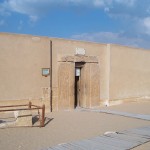
Notes in the margins of the scene termed “rendering accounts” in the mastaba of Mereruka
The mastaba of Mereruka, called Meri, is located at Saqqara, near the pyramid of Teti, next to the pre-existing tomb of his colleague, Kagemni. Both acceded to the post of vizier during the reign of Teti, at the beginning of the 6th Dynasty. The vast building is divided into three parts, sheltering, besides the deceased, his wife Seshseshet (daughter of Teti) and their daughter Meryteti. Those who visit the tomb cannot fail to notice, at the beginning of the circuit, a scene decorating the lower part of the left wall of the long passage that leads to section A reserved for Mereruka. [more…]
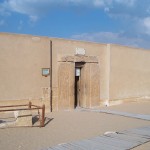
Notes en marge de la scène dite «de reddition des comptes» dans le mastaba de Mererouka
Le mastaba du Mererouka, dit Meri, se situe à Saqqara, à proximité de la pyramide de Teti, jouxtant la tombe préexistante de son collègue Kagemni. Tous deux ont accédé au vizirat sous le règne de Teti, au début de la VIe dynastie. Le vaste bâtiment se divise en trois parties, hébergeant outre le défunt, son épouse Seshseshet (fille de Teti) et leur fille Meryteti. Ceux qui ont visité la tombe n’auront pas manqué de remarquer, en début de parcours, une scène décorant la paroi gauche, dans sa partie inférieure, du long passage menant à la section A réservée à Mererouka. [more…]
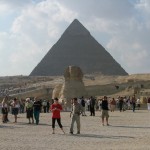
Gantenbrink’s Door – Part II, the Second Robot Mission
The first part of this series tells how, in the early 1990s, modern science revealed the existence of something at the far end of the small shaft heading upwards and outwards from the north and south walls for the Queen’s Chamber in the Great Pyramid. These shafts had attracted little attention since the 19th century. Gantenbrink’s discovery, and explosive pictures, of a door at the end of the southern shaft changed the game. [more…]
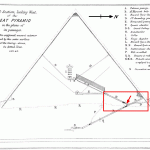
The Granite Plugs of the Great Pyramid
The Great Pyramid on the Giza plateau at the apex of the Nile delta is one of the oldest and largest and yet perhaps the most enigmatic manmade structure in recorded history. Egyptologists have determined that it was commissioned by the pharaoh Khufu in the 4th Dynasty of the Old Kingdom to be his royal tomb. Figure 1 shows a vertical cross section indicating the main passages and chambers. However, within these passages and chambers are many elements of construction that are difficult to explain within the context of a royal tomb. This article focuses on one such enigma: the set of three massive granite blocks that plug the lower end of the Ascending Passage. [more…]
Help required identifying photos from Abusir
A query from Pat Kennedy: A few years ago I made a visit to the Abusir pyramid field but fear that my photos have become mixed up and I don’t know what I took, where. I am sure of the provenance of the Sahure pyramid picture but I think the other two may have been […] [more…]
The sAb in the Old Kingdom: a consideration of the title within the scope of a prosopographic study
Abstract
The article aims to give an overview of the activities of the bearer of the title sAb in the Old Kingdom and to propose a definition for it. It is based on the analysis of more than 500 documents, citing 76 titles including the term sAb and to collate all these in the titularies of the individuals concerned. It also attempts a brief description of the nature of the functions of the practitioners of justice, citing the autobiography of Weni. It further points up the connections to judicial institutions and the references to actions of a judicial nature, but also emphasises the “non-judicial” spheres involving the sAb. The article formulates a basic structure, centred round the knowledge and practice of law and orientated towards various sectors, such as the administration of the State in its diverse facets, the function of the judiciary and the management of patrimony in the great temples through specialisation. The term sAb could be the hallmark of the title holder in the field of law, but without confining him to the specific function of a sole judge. [more…]
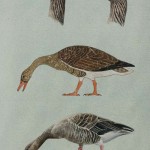
The Geese of Meidum
This iconic painting from the Old Kingdom Mastaba of Nefermaat and Itet is in The Egyptian Museum in Cairo and consists of three pairs of birds on one register. The right-hand central pair are universally accepted as Red-breasted Goose, Branta ruficollis, and the left-hand central pair as Greater White-fronted Goose, Anser albifrons. [more…]
Gantenbrink’s Door – Part I: the Orginal Discovery
Although we now know that there is chamber at the end of the shafts in the Queen’s Chamber of the Great Pyramid, I still remember first hearing in the late 1990s that something had been found. The whole affair was shrouded in secrecy, back in the days when Dr. Hawass was the Director in charge of the Giza Plateau rather than Minister of State, the position he holds today. [more…]
 By
By